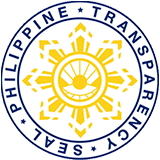Cordillera Administrative Region– Out of the 122,077 households assessed by the National Household Targeting System for Poverty Reduction (NHTS-PR), 91% or 111, 159 households were identified as Indigenous People.
This is through the Indigenous People/Informal Sector Validation conducted by the NHTS-PR in coordination with the National Commission for Indigenous People (NCIP). The said validation aims to address the targeting needs of the data users of the NHTS-PR.
NHTS-PR Regional Field Coordinator Lilia Rose Say-awen said that the availability of household level data on IP or Indigenous Cultural Communities (ICC) will facilitate the development of programs and services that are responsive to their needs and desires. The validation will also verify the indicators used by the NHTS-PR in identifying IPs.
Say-awen also said that the IP Data Validation is part of the compliance of the programs and projects of the Department of Social Welfare and Development (DSWD) to Republic Act 8371 or Indigenous Peoples Rights and Acts (IPRA).
In Abra, 5,769 or 87% are IP households out of the 6,646 households covered by IP/IS Validation. Abra IPs are mostly Tingguians, also known as Itneg, with 99.6% out of the identified IPs.
Isnag, also known as Isneg, dominates the IPs of Apayao with 57%. 2,687 or 67% are IP households in Apayao out of the 4,000 households assessed.
Kankana-eys dominate the IP households in Baguio and Benguet with 1420 and 17591 households, respectively. 3,813 households are recognized as IP out of 5,171 households assessed in Baguio, while, 37,012 households out of 39,335 households are identified as IP in Benguet.
Kankana-eys are the also the most represented tribe in Mt. Province with 45.52%. The validated IP household in the province is 99% out of the 20,317 households evaluated.
Ifugao IP group with two sub-tribes, Ayangan and Tuwali, dominated the identified IPs in Ifugao. 95% households validated in the province are IPs/ICCs.
Kalinga IP group, which has been found to have the most number of sub-tribes such as Sumadel, I-Butbut, I-Limos, I-Guilayon, and I-Salegseg to name a few, is the most numbered IP in Kalinga with 78% of the total IP in the province.
Under RA 8371, IP refers to a group of homogenous societies identified by self-ascription and ascription by others, who have lived as an organized community on communally bounded and defined territories, sharing common language, customs, traditions and other distinctive cultural traits. People who retain their social, economic, cultural and political institutions that are living outside their traditional land domains are also regarded as IP.
Ethnicity, on the other hand, refers to the sense of belongingness and the household member’s identity, by blood and not by choice or adoption.
These definitions are used by the NHTS-PR of the DSWD in identifying IPs in the region.
Meanwhile, the NHTS-PR, which is a data management system, identifies who and where the poor are through 46 poverty indicators. These indicators are used to qualify a household to be included in the database of poor households which becomes the pool of potential beneficiaries of social protection programs. # DSWD-CAR, SOCIAL MARKETING UNIT, KAYE ANN O. MAPALO




